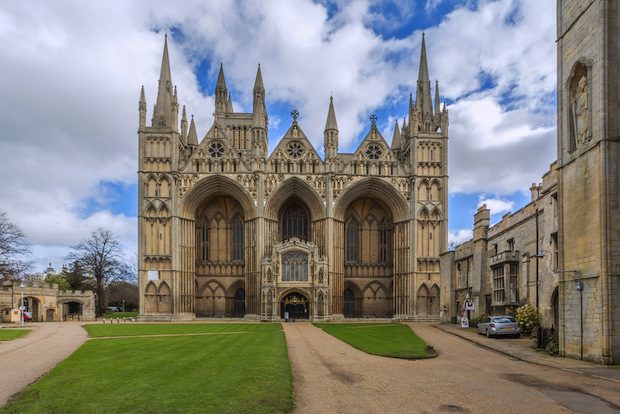A Surprising Fact About Medieval Cathedrals

The other day several of us were bothered by the fact that the medieval Peterborough Cathedral in England now rents out its nave for social functions, most recently an insurance company dinner. It seemed vulgar and sacrilegious to us. Well, I just came across this passage from Universe of Stone by Philip Ball, a history of the 12th century Chartres cathedral. Here he’s speaking of medieval cathedrals in general:
[T]he cathedral was the focus of the spirituality that permeated the social fabric of the age. Yet it was precisely because religions was so central to all aspects of medieval life that townspeople did not necessarily adopt a disposition of hushed awe when they passed inside its walls. The choir and sanctuary, in the eastern end of the building, was a holy place, hidden from the laity by the rood screen. But elsewhere in the church, the ordinary people made themselves at home. When a service was not in progress, they would meet their friends here, bring in their dogs and their hawks, arrange trysts, eat snacks. The poor might even bed down for the night in the gloomy recesses. Stalls clung like limpets to the walls of the building. At Strasbourg, the mayor held office in his pew in the cathedral, meeting burghers there to conduct business.
Wine merchants, probably employed by the chapter itself, even sold their wares from the nave of Chartres — by selling inside the church, they were exempted from the taxes imposes by the count of Blois and Chartres. …
It is entirely characteristic of medieval theology that such prosaic concerns should coexist with the idea that the church is a representation of heaven. That may, in fact, stand as a metaphor for the very paradox that these buildings present to modern times. They are surely the most profound expressions of the Christian faith, and with it the ontological framework, of the Middle Ages. And yet they remain resolutely material: stone and glass, wood and iron, shaped by the hands of unlettered men, who sometimes enjoyed a great deal of latitude for injecting their own preoccupations and ideas into the fabric. They are prodigious collaborations between the tangible and the spiritual, the mundane and the transcendental, the public and the personal. They embody a kind of union that art has long forgotten how to make.
Maybe I and others owe poor Peterborough an apology. Except for this sad fact: wine merchants and all manner of men could conduct profane (as in: not sacred) business inside the cathedrals because religion was at the center of medieval life. In the 21st century, insurance salesmen can sup in the nave of the Peterborough cathedral because religion is so far from the center of contemporary life.
Subscribe for as little as $5/mo to start commenting on Rod’s blog.